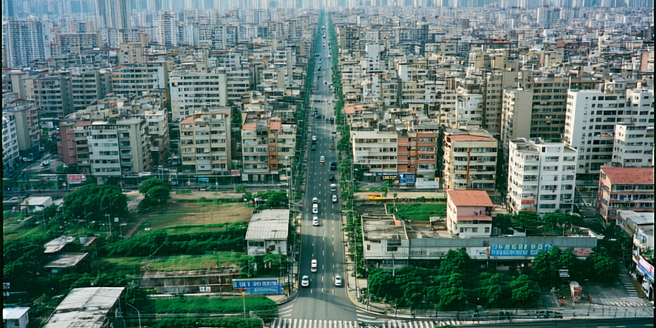
Introduction to Urbanization and Weather
Urbanization refers to the increasing population and expansion of cities. This phenomenon results in significant environmental changes that influence local weather patterns. As cities grow, they alter natural landscapes, replace vegetation with concrete and asphalt, and introduce heat sources like vehicles and factories. These changes lead to a phenomenon known as the urban heat island effect, where urban areas become warmer than their rural surroundings. The modified surface properties can influence cloud formation, precipitation, and even wind patterns. Understanding the impact of urbanization on weather is crucial for accurate forecasting, as failing to consider these factors can lead to erroneous predictions. Urban planners and meteorologists must collaborate to develop strategies that mitigate adverse weather impacts due to urbanization. Addressing these challenges is essential for sustainable urban development.
How Urbanization Influences Climate Patterns
Urbanization significantly alters local and regional climate patterns. The concentration of buildings, roads, and infrastructure modifies the surface energy balance, leading to higher temperatures and altered humidity levels. The urban heat island effect not only increases temperatures but can also disrupt local wind patterns. Natural landscapes that once absorbed and stored rainfall are replaced with impervious surfaces, leading to increased runoff and reduced groundwater recharge. These changes can amplify the intensity and frequency of extreme weather events, such as heatwaves and heavy rainfall. Additionally, urban emissions contribute to air pollution, which can further impact weather patterns by affecting cloud formation processes. Understanding the intricate relationship between urbanization and climate is vital for developing effective adaptation and mitigation strategies to minimize adverse impacts on urban populations and ecosystems.
Challenges in Forecasting Urban Weather
Forecasting weather in urban areas presents unique challenges due to complex interactions between the built environment and atmospheric processes. The heterogeneous nature of cities, with varied building heights and land uses, creates microclimates that standard meteorological models often fail to capture. Additionally, the urban heat island effect can lead to significant temperature variations across small distances, complicating temperature predictions. Reliable urban weather forecasting also requires accurate data on emissions from vehicles and industries that can influence local air quality and cloud formation. Conventional weather prediction models must be adapted to incorporate urban-specific parameters to improve accuracy. Furthermore, the rapid pace of urbanization necessitates continuous model updates and real-time data integration to address evolving urban landscapes. These challenges underscore the need for interdisciplinary collaboration to advance urban meteorology and enhance forecasting capabilities.
Technological Advances in Urban Meteorology
The field of urban meteorology has seen significant technological advances that enhance our understanding and prediction of weather in urban environments. The deployment of high-resolution satellites provides detailed observations of urban landscapes and atmospheric conditions, allowing for better modeling of weather patterns. The development of advanced computer models enables the simulation of complex urban interactions, including the urban heat island effect and its influence on weather systems. Additionally, the integration of big data and machine learning techniques allows for the analysis of vast amounts of observational data, improving forecast accuracy. Urban sensor networks, consisting of weather stations, air quality monitors, and radar systems, provide real-time data that is crucial for timely and accurate weather predictions. These technological innovations are vital in addressing the unique challenges posed by urbanization and ensuring resilient and adaptive urban planning.
Future Trends: Urbanization and Climate Predictions
As urbanization continues at an unprecedented pace, understanding its impact on climate predictions becomes increasingly important. Future trends in urban meteorology focus on enhancing predictive capabilities through the integration of cutting-edge technologies and multidisciplinary approaches. Climate models will become more sophisticated, incorporating urban-specific parameters and utilizing artificial intelligence to analyze complex datasets. Advances in remote sensing will provide high-resolution data essential for capturing the nuances of urban environments. Collaborative efforts between urban planners, meteorologists, and policymakers are imperative to develop strategies that mitigate urbanization’s adverse effects on climate. Emphasis will be placed on sustainable urban development practices that address climate resilience and reduce emissions. By advancing our understanding of the relationship between urbanization and climate, societies can make informed decisions to protect urban populations and preserve natural ecosystems in the face of climate change.
